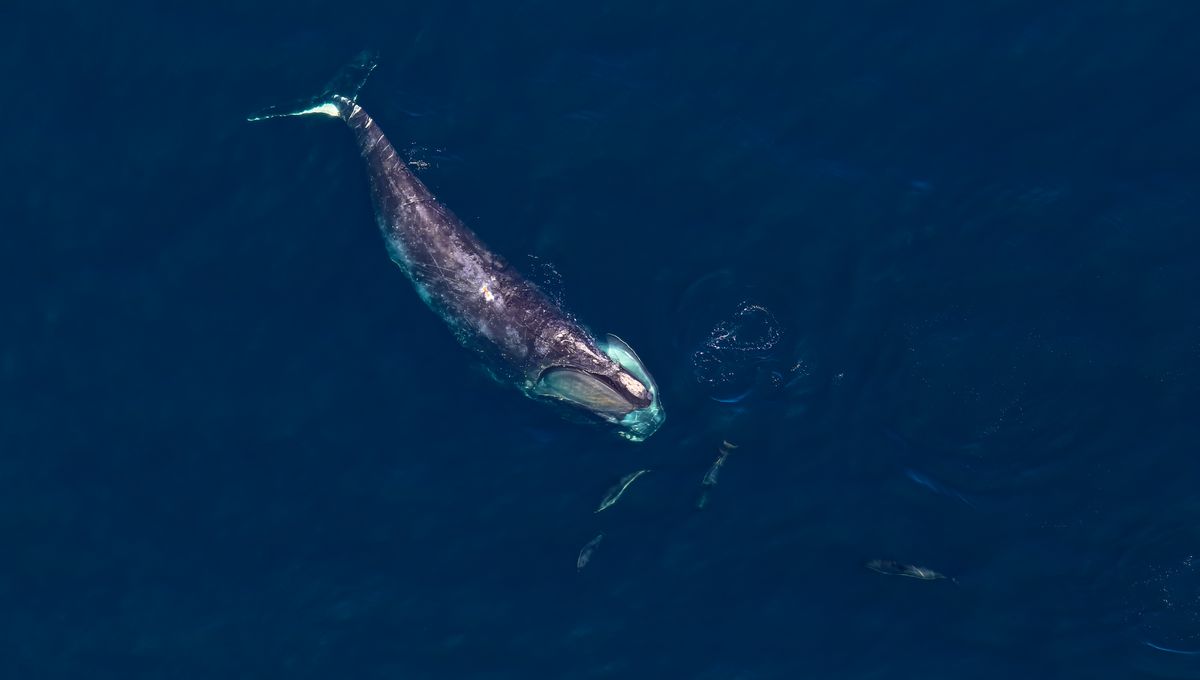
North Atlantic right whales – a critically endangered species – are shrinking. According to new research, this reduction in body size, induced in part by stressors such as climate change, is impacting their ability to reproduce. It’s not good news for a species already at risk of extinction.
Measuring up to 16 meters (52 feet) in length and weighing as much as 63,500 kilograms (140,000 pounds), these are some large beasts – even their testicles weigh an actual ton. However, research published in 2021 revealed that they’re getting smaller.
“On average, a whale born today is expected to reach a total length about a meter [3.3 feet] shorter than a whale born in 1980,” Joshua Stewart of the National Oceanic and Atmospheric Administration (NOAA) said in a statement at the time. That’s an average reduction of around 7 percent.
In the new study, researchers set out to investigate whether this drop in size was associated with lower reproductive output. In other words: were these smaller whales having fewer babies?
Unfortunately for the species, the answer appears to be yes. After reviewing data from the North Atlantic Right Whale Consortium collected between 1970 and 2020, the researchers conclude that the results “provide strong evidence that the body size of a female right whale is closely associated with the probability of giving birth to a calf.”
For example, they found that a 14-meter (46-foot) female had a 56 percent chance of giving birth, whereas an 11-meter (36-foot) whale had just a 14 percent likelihood.
The reduction in size was also found to have exacerbated the declining health of right whales, which is evident in both this and previous research.
“The effects of decreasing mean body size on reproductive performance are another concerning indication of the worsening prospects for this species and many others affected by environmental change,” the team write in their study.
North Atlantic right whales are one of the most endangered of all large whale species. Hunted to the brink of extinction in the late 19th century, their population has never recovered. According to NOAA Fisheries, only around 360 individuals remain today, including fewer than 70 reproductively active females.
As well as climate change, the species faces threats from entanglement in fishing gear, habitat degradation, ocean noise, and vessel strikes.
The team behind the latest study urge that direct threats to their survival be removed as a much-needed first step toward protecting the whales, and that long-term management policies prioritizing female health and growth be instigated to allow the population to recover.
“This study reinforces the urgent need to reduce human-caused stressors, especially from boat strikes and fishing entanglements, to ensure mothers are healthy and strong enough to calve,” Oceana marine scientist Julia Singer said in a statement sent to IFLScience. “For one of the most endangered large whales on the planet, every single North Atlantic right whale calf is vital to avoid extinction.”
The study is published in the journal Royal Society Open Science.
Source Link: This Enormous Animal Is Shrinking And It Could Have Catastrophic Consequences